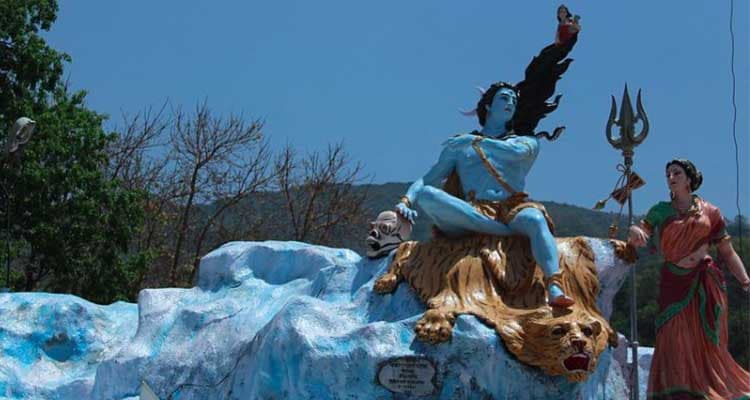Unintentionally, these actions cause unforeseen consequences for the outside world, even those who profess to love them. The love that they knew burned like a calm fire is not the same any more. It is now a wildfire. But perhaps they should take a lesson from this tale – one of our very own myths, the tale of Sati.
The Rage that Shiva felt after he lost Sati
Let me recount this tale to show you what happens when rage gets out of hand when that feeling of lost love impairs all your senses.The god Brahma had a son named Daksha who ruled over a huge kingdom. He had many daughters, including the beautiful Sati, also known as Dakshayani. Usually, she obeyed her father, who she doted on. Likewise, Daksha too doted on her and wished for her a suitable husband. One day, Sati went on a journey with a few of her handmaidens and entered a forest in the far north of her kingdom. There she saw an ascetic, dressed scantily in yellow and green, his hair tied up in a mound, eyes closed as if in meditation, on a small rectangular table. In front of him sat on the ground many people, dressed as scantily as the ascetic. Looking at the ascetic, she felt a strange divine aura. He was none other than Shiva himself, one of the Three Primordial Gods of the Hindu mythoverse, and the disciples around him were the Ganas, whose head was Nandi, the bull god.
Sati defied her father and married Shiva
Her heart fluttered at the sight of him and she fell immediately in love. But Lord Shiva, at that time, was a Vairagya (a Sanskrit term used in Hindu philosophy, roughly translating as detachment). To get Shiva off the path of renunciation, to consider marrying her, she did great penance. Lord Shiva knew who she was: the embodiment of Shakti herself. But for eons he had grown so accustomed to the path of dispassion that he found it hard to partake in the pleasures of the material world. But he finally gave in. When Sati professed her love for Shiva to Daksha, her father forbade her from meeting the Lord of Death. Daksha did not see in the ascetic God a potential bridegroom for his beloved daughter. But Sati defied him and moved to the forests after marrying Shiva. Daksha organised a huge yagya and deliberately did not invite Shiva and Sati. Despite having warned by her husband not to go to a function where they were not invited, Sati went to the ceremony alone. Her father insulted her in front of all his guests, among whom were the Lords Brahma and Vishnu themselves. Unable to bear the snubs, Sati immolated herself in the sacrificial fire. When Shiva felt his beloved being ripped apart by death, he invoked in his wrath Veerabhadra and Bhadrakali, who led the Ganas to a battle with Daksha. In the skirmish, Daksha was decapitated and the yagna shaala was destroyed. Shiva, himself, in a rage, travelled throughout the world, his anger scorching the earth. Shiva started his famous tandava dance, which disintegrated Sati’s dead body into 51 pieces, each of which fell on different places. These sites are today known as Shakti Peethas. It was only when Lord Vishnu interfered and convinced Shiva to calm down that the near-apocalypse stopped and Shiva was able to see the destruction he had wrought. He forgave Daksha and replaced his head with a ram’s head and gave back the king his life. The yagya was allowed to finish.
This Indian mythological story says how rage can be detrimental to others
The tale speaks of how rage can be detrimental to others. Rather, we should nurture the love we had for the departed and give it a corner in our hearts for as long as we breathe.


